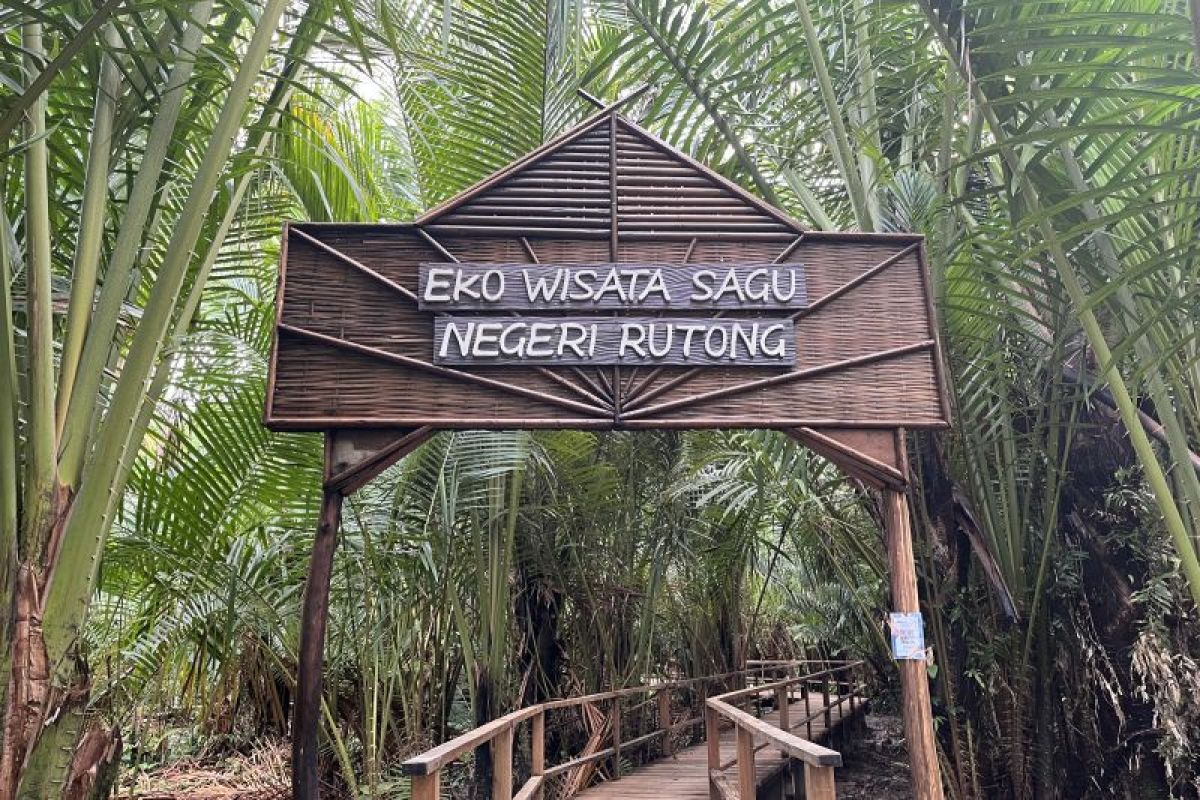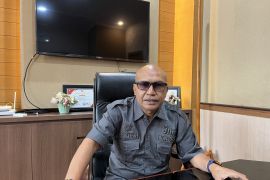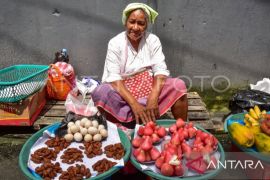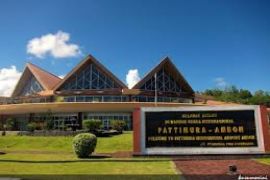As a customary village with the largest sago forest in Ambon, Rutong is continuing to make efforts to preserve sago by making the forest one of the features of the local tourism village.
The landscape and the diversity of germplasm maintained by the people serve as the village's selling points for visitors.
The leader of Rutong, Reza Valdo Maspaitella, informed that the local government has carried out the spatial planning of the Rutong area since 2022 by building a road to the sago forest and tourist area and the mangrove coastal zone.
In fact, Rutong is the only village in Maluku that has a comprehensive spatial plan covering locations ranging from mountain areas to beaches.
All areas in Rutong have been divided based on the plan: there are areas that can be used for development projects and those that cannot in order to preserve nature.
Sago ecotourism
Sago is a symbol of life for people in Maluku, especially Rutong. It is also supporting the acceleration of economic growth of the local community.
Given the vast potential of the sago forest, Maspaitella and local officials have designed a sago forest ecotourism program.
The program involves the community in efforts to preserve the environment, especially in processing sago into food products, which are currently fetching attractive prices in the market.
Visitors to the area can see how sago is made using traditional methods and even participate in preparing food items with sago.
In the forest, they can directly observe the processes involved in obtaining sago starch, such as the selection of sago trees suitable for cutting, then cleaning and cutting of sago palm trunks, as well as obtaining sago pith, which is locally known as pukul sagu.
The pith is then filtered using a walang goti, a tool made of sago palm frond used for squeezing and separating sago from water.
The sago starch is then moved to a container called tumang.
The economic impact of the sago forest ecotourism has included a significant increase in the income of the local community. This is because, in addition to visiting the sago forest, visitors also tend to buy sago products.
Tour packages
The village offers two tour packages. The first is an ecotourism package that allows visitors to see the traditional processing of sago firsthand.
The second package includes a visit to the sago forest, along with a chance to watch traditional dances and music performances by local youths called jujaro and mungare.
Apart from that, visitors can also sample sago worms, which are high in protein and fat.
People can even visit the forest by shelling out a small entry fee of Rp3 thousand (around USD0.18) per person.
There is also an educational tour package for students that includes various activities, such as an introduction to sago as the identity of the Maluku people as well as the processing of sago into various kinds of food.
According to the manager of the sago forest ecotourism, Ricardo Makatita, the forest hosts visitors from schools, communities, and individuals every day.
Several locations have been prepared in the forest where tourists can get information. They also serve as a living laboratory to educate students and the general public about the sago-making process.
"We are currently building a room that will have sago derivative products and will also be an information center for visitors," Makatita said.
In addition to having the natural potential to help maintain food security, Rutong has also implemented digitalization through the Rutong.id digital platform since 2021, marking the first smart village development in Maluku province.
The smart village development has been carried out in response to challenges related to governance, human resource development as a central point of development, effective and open public communication, community empowerment, and economic sector development.
In view of these innovations, Rutong was designated as one of the 15 best villages at the national level that received assistance and financing for the development of micro, small, and medium enterprises (MSMEs) in 2024.
Rutong also ranked fourth nationally in the prestigious Indonesian Tourism Villages Awards (ADWI) 2023 in the digital tourism village and creative content category.
Food security
The potential of Rutong's sago forest is continuing to be developed to maintain food security and thereby, anticipate any food supply crisis.
"The existence of the Rutong sago forest is an opportunity to revive local food," the acting mayor of Ambon, Dominggus N. Kaya, said.
The food security program here is an effort to revive local foods, considering that Ambon City is highly dependent on outside food supplies.
Sago has been a staple food for the Maluku people since ancient times. They process sago into various foods, such as papeda, sagu lempeng, sagu gula (a mixture of sago, brown sugar, and coconut), karu-karu (a fried mixture of sago starch and raw coconut), or uha (a grilled mixture of raw sago and coconut wrapped in sago leaves).
It is also used to make more contemporary foods such as brownies and burgers.
The sago forest is vital for maintaining food security because many areas of Ambon are seeing infrastructure development. Thus, the land that can be used for agriculture is small.
Moreover, Ambon is a consumer region and is not a part of food-producing regions, making it depend more on supplies from other areas.
It would not be an exaggeration to say that Rutong's sago forest is the main guard of Maluku's food security. Through cooperation in preserving the forest as well as innovation, Rutong can serve as a strong bastion of food security.
Related news: Papua: Sago production house boosts local economy
Related news: Bapanas pushes sago for food security
Editor: Rahmad Nasution
Copyright © ANTARA 2025









